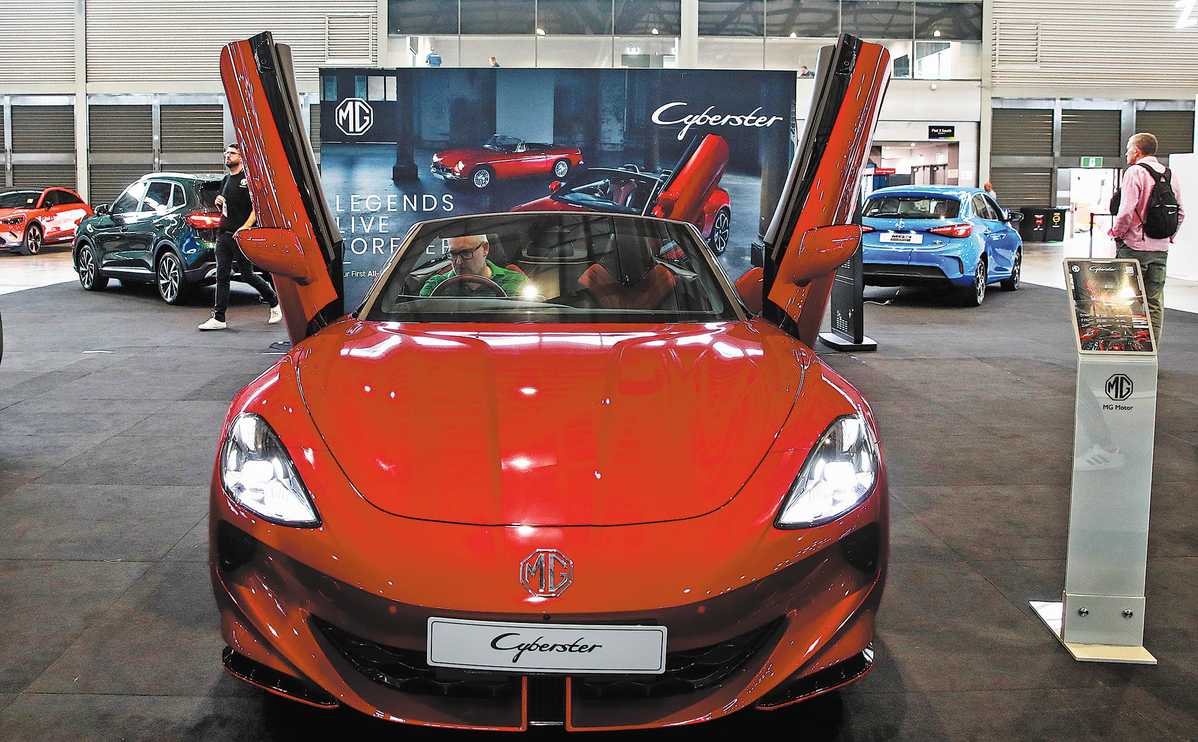Electrifying trend hard to ignore as I take the wheel


Buying a car was near the top of my to-do list when I returned to Australia earlier this year.
Spending the past few years in Beijing — where public transportation is highly affordable and efficient — taught me that having a vehicle of my own was still convenient for traveling farther out to suburban or rural areas.
The last time I drove in Australia, it was with a pickup truck or what locals call a "ute" for utility vehicle. Envisaging regular trips to the country's famous beaches and outback, I would use the vehicle's large, open boot space to haul my surfboard, horse riding tack and other recreational equipment for the great outdoors.
It was diesel-powered with a manual transmission, as rugged a machine as you could get.
But reality soon set in — I worked in the city and rarely had time to drive out for leisurely pursuits. Changing the ute's gears in busy urban traffic, maneuvering its large size into tight parking spaces and filling it up at gas stations also proved enervating and expensive. Selling off the ute for half the price I bought it for added to the costly decision.
So this time, as I stepped into a showroom in Sydney, I knew I had to go for a cheaper, more practical and comfortable car.
But when I faced rows of the latest models on display, I realized the more important choice I had to make was between an electric vehicle and a traditional gasoline-powered one.
One of my first major assignments here underscored the electrifying trend — reporting about an EV industry expo revealed not just the growing green transition among Australian motorists, it also pointed to the lead that Chinese carmakers were taking in the field.
I found out that in the first half of this year, EVs made up more than 12 percent of new car sales in Australia, up from 9.6 percent in the corresponding period last year.
More than 14,000 additional EVs had been sold by July, compared with the corresponding period last year, Julie Delvecchio, CEO of the Electric Vehicle Council, the main body representing the sector in the country, told me.
"There are now more than 150 electric vehicle models in Australia that suit the diverse needs of Australian motorists. From family-friendly SUVs to tradie-ready utes, small business vans to zippy suburban hatchbacks, there's now an EV for every lifestyle Down Under," she said, using the colloquial term for workers in manual trades such as plumbing and carpentry.
Chinese manufacturers, riding on their EV expertise, are in fact gaining momentum in supplying vehicles to the Australian market and are on track to become the major source of automotive imports by 2035, according to the latest industry research.
The inroads made by Chinese imports — from almost zero units in 2000 to about 15 percent of the market last year — are underpinned by huge investment and support for developing battery-electric vehicles, plug-in hybrid technology and manufacturing capabilities.
Chinese EV players are also poised to benefit most from Australia's new vehicle efficiency standard, which is expected to contribute to a shift in the composition of imports by increasing sales of low-emission vehicles and reducing demand for higher-emission vehicles.
With the tightening of emission standards, the globalization of supply chains and the development of EV technology, China is set to play an increasingly central role in Australia's automotive future and landscape.
Test driving an EV was certainly an eye-opener for me. It was a quiet, smooth ride. The acceleration was amazingly rapid and responsive. All the advanced driver-assistance and video-enabled functions, such as those for parking, lane keeping, blind spot warning and fatigue monitoring, further elevated the experience.
The advertised financial and emission savings from driving EVs long term made them even more enticing.
Still, I finally opted for a new car that ran on fossil fuels. A major Chinese brand with many state-of-the-art features, its purchase price was significantly lower than that of an EV alternative. Similarly, it promised cheaper repairs and maintenance compared with EVs.
I was also unable to completely overcome what Australians call "range anxiety", or the fear of an EV running out of battery power before reaching a charging station, in this vast country.
The public and private sectors' increasing efforts to invest in EV infrastructure now look set to allay those fears by promising adequate infrastructure within easy reach.
Meanwhile, my far-flung expeditions to remote areas remain elusive, with my drives still limited to urban trips for assignments and errands.
Just as I constantly scrutinize the unpredictable fuel prices displayed glaringly on billboards every time I drive past a gas station, I will also closely follow the latest EV offerings — in case I need to make that green switch quickly.
The author is a correspondent at China Daily Asia-Pacific Bureau based in Sydney.
Contact the writer at alexishooi@chinadaily.com.cn

































